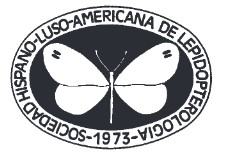A review on heat stress altering the insect life history strategies and underlying mechanisms: Special reference to an economically important Lepidoptera, Bombyx mori (Linnaeus, 1758) (Lepidoptera: Bombycidae)
DOI:
https://doi.org/10.57065/shilap.468Keywords:
Lepidoptera, Bombycidae, thermo-tolerance, Heat shock proteins, biomarkers, global warmingAbstract
Lepidoptera is an order belonging to class Insecta consisting of Rhopalocera and Heterocera. B. mori belongs to this order and is the backbone of sericulture. Sericulture, the culture, rearing and maintenance of Bombyx mori (Linnaeus, 1785) for silk production, is widely practiced in India, contributing to its economy and providing livelihoods to many, especially those from lower socioeconomic backgrounds. Temperature and humidity affect silk production greatly. Heat shock genes and proteins protect B. mori to a certain extent from increased heat stress. However, outside this range, silkworm biology suffers. The silkworm adapts to heat by upregulating thermotolerance genes and proteins, especially heat shock proteins (HSPs). Produce different heat-resistant proteins at different temperatures. Larvae, embryos, and cocoons are affected by heat stress. Given the silkworm’s sensitivity to temperature and humidity and the alarming pace of climate change and global warming faced by the earth, it is necessary to consider solutions that will allow B. mori to adapt in the future decades. Molecular and enzymatic markers may help screen thermotolerant silkworm breeds. Given this insect’s temperature sensitivity, global warming and climate change may harm it even more than other insects. Therefore, to save this insect and the sericulture sector, steps must be taken in this direction.
Downloads
Global Statistics ℹ️
|
1124
Views
|
308
Downloads
|
|
1432
Total
|
|
References
Abhijith, A., Joy, A., Prathap, P., Vidya, M., Niyas, P. A., Madiajagan, B., Krishnan, G., Manimaran, A., Vakayil, B., Kurien, K., Sejian, V., & Bhatta, R. (2017). Role of Heat Shock Proteins in Livestock Adaptation to Heat Stress. Journal of Dairy, Veterinary & Animal Research, 5, 00127. https://doi.org/10.15406/jdvar.2017.05.00127 DOI: https://doi.org/10.15406/jdvar.2017.05.00127
Basiricò, L., Morera, P., Primi, V., Lacetera, N., Nardone, A., & Bernabucci, U. (2011). Cellular thermotolerance is associated with heat shock protein 70.1 genetic polymorphisms in Holstein lactating cows. Cell Stress and Chaperones, 16(4), 441-448. https://doi.org/10.1007/s12192-011-0257-7 DOI: https://doi.org/10.1007/s12192-011-0257-7
Betts, R. A., Collins, M., Hemming, D. L., Jones, C. D., Lowe, J. A., & Sanderson, M. G. (2011). When could global warming reach 4ºC? Philosophical Transactions of the Royal Society A: Mathematical, Physical and Engineering Sciences, 369(1934), 67-84. https://doi.org/10.1098/rsta.2010.0292 DOI: https://doi.org/10.1098/rsta.2010.0292
Bhat, M., Buhroo, Z., & Manjunatha, A. (2016). Harsh impact of temperature on proteomic profile of the silkworm Bombyx mori l. Journal of Cell and Tissue Research, 16(3), 5929-5935.
Bhat, S., Kumar, P., Kashyap, N., Deshmukh, B., Dige, M. S., Bhushan, B., Chauhan, A., Kumar, A., & Singh, G. (2016). Effect of heat shock protein 70 polymorphism on thermotolerance in Tharparkar cattle. Veterinary World, 9(2), 113-117. https://doi.org/10.14202/vetworld.2016.113-117 DOI: https://doi.org/10.14202/vetworld.2016.113-117
Burrows, M. T., Schoeman, D. S., Buckley, L. B., Moore, P., Poloczanska, E. S., Brander, K. M., Brown, C., Bruno, J. F., Duarte, C. M., Halpern, B. S., Holding, J., Kappel, C. V., Kiessling, W., O’connor, M. I., Pandolfi, J. M., Parmesan, C., Schwing, F. B., Sydeman, W. J., & Richardson, A. J. (2011). The Pace of Shifting Climate in Marine and Terrestrial Ecosystems. Science, 334(6056), 652-655. https://doi.org/10.1126/science.1210288 DOI: https://doi.org/10.1126/science.1210288
Calabria, G., Dolgova, O., Rego, C., Castañeda, L. E., Rezende, E. L., Balanyà, J., Pascual, M., Sørensen, J. G., Loeschcke, V., & Santos, M. (2012). Hsp70 protein levels and thermotolerance in Drosophila subobscura: A reassessment of the thermal co-adaptation hypothesis. Journal of Evolutionary Biology, 25(4), 691-700. https://doi.org/10.1111/j.1420-9101.2012.02463.x DOI: https://doi.org/10.1111/j.1420-9101.2012.02463.x
Cardoso, P., Barton, P. S., Birkhofer, K., Chichorro, F., Deacon, C., Fartmann, T., Fukushima, C. S., Gaigher, R., Habel, J. C., Hallmann, C. A., Hill, M. J., Hochkirch, A., Kwak, M. L., Mammola, S., Ari Noriega, J., Orfinger, A. B., Pedraza, F., Pryke, J. S., Roque, F. O., & Samways, M. J. (2020). Scientists’ warning to humanity on insect extinctions. Biological Conservation, 242, 108426. https://doi.org/10.1016/j.biocon.2020.108426 DOI: https://doi.org/10.1016/j.biocon.2020.108426
Chandrakanth, N., Lakshmanan, V., Verma, A, K., Rahul, K., & Trivedy, K. (2018). Identification of potential thermo tolerant bivoltine silkworm breeds through phenotypic and molecular approach. Global journal of bioscience and biotechnology, 7, 525-530.
Chandrakanth, N., Moorthy, S. M., Ponnuvel, K. M., & Sivaprasad, V. (2015a). Identification of microsatellite markers linked to thermotolerance in silkworm by bulk segregant analysis and in silico mapping. Genetika, 47(3), 1063-1078. DOI: https://doi.org/10.2298/GENSR1503063C
Chandrakanth, N., Moorthy, S. M., Ponnuvel, K. M., & Sivaprasad, V. (2015b). Screening and classification of mulberry silkworm, Bombyx mori based on thermotolerance. International Journal of Industrial Entomology, 31(2), 115-126. https://doi.org/10.7852/ijie.2015.31.2.115 DOI: https://doi.org/10.7852/ijie.2015.31.2.115
Chandrakanth, N., Ponnuvel, K. M., Moorthy, S. M., Sasibhushan, S., & Sivaprasad, V. (2015). Analysis of transcripts of heat shock protein genes in silkworm, Bombyx mori (Lepidoptera: Bombycidae). European Journal of Entomology, 112(4), 676-687. https://doi.org/10.14411/eje.2015.094 DOI: https://doi.org/10.14411/eje.2015.094
Chattopadhyay, G. K., Sengupta, A. K., Verma, A. K., Sen, S. K., & Saratchandra, B. (2001). Esterase isozyme polymorphism, specific and nonspecific esterase, syngenic lines development and natural occurrence of a thermostable esterase in the tropical silkworm Bombyx mori L. Insect Biochemistry and Molecular Biology, 31(12), 1191-1199. https://doi.org/10.1016/S0965-1748(01)00065-0 DOI: https://doi.org/10.1016/S0965-1748(01)00065-0
Chauhan, B. S., Prabhjyot-Kaur, Mahajan, G., Randhawa, R. K., Singh, H., & Kang, M. S. (2014). Chapter Two. Global Warming and Its Possible Impact on Agriculture in India. In D. L. Sparks (Ed.). Advances in Agronomy, 123, 65-121. Academic Press. https://doi.org/10.1016/B978-0-12-420225-2.00002-9 DOI: https://doi.org/10.1016/B978-0-12-420225-2.00002-9
Chavadi, V. B., Sosalegowda, A. H., & Boregowda, M. H. (2006). Impact of heat shock on heat shock proteins expression, biological and commercial traits of Bombyx mori. Insect Science, 13(4), 243-250. https://doi.org/10.1111/j.1744-7917.2006.00090.x DOI: https://doi.org/10.1111/j.1744-7917.2006.00090.x
Chen, J., Kitazumi, A., Alpuerto, J., Alyokhin, A., & De Los Reyes, B. (2016). Heat-induced mortality and expression of heat shock proteins in Colorado potato beetles treated with imidacloprid. Insect Science, 23(4), 548-554. https://doi.org/10.1111/1744-7917.12194 DOI: https://doi.org/10.1111/1744-7917.12194
Chen, P., Xiao, W.-F., Pan, M.-H., Xiao, J.-S., Feng, Y.-J., Dong, Z.-Q., Zou, B.-X., Zhou, L., Zhang, Y.-H., & Lu, C. (2020). Comparative genome-wide DNA methylation analysis reveals epigenomic differences in response to heat-humidity stress in Bombyx mori. International Journal of Biological Macromolecules, 164, 3771-3779. https://doi.org/10.1016/j.ijbiomac.2020.08.251 DOI: https://doi.org/10.1016/j.ijbiomac.2020.08.251
Coviella, C. E., & Trumble, J. T. (1999). Effects of Elevated Atmospheric Carbon Dioxide on Insect-Plant Interactions. Conservation Biology, 13(4), 700-712. https://doi.org/10.1046/j.1523-1739.1999.98267.x DOI: https://doi.org/10.1046/j.1523-1739.1999.98267.x
Dahi, H. F., Taha, R. H., & Ibrahim, W. G. (2016). nutritional efficiency and its relation to Bombyx mori l. productivity under different constant temperatures. Journal of Plant Protection and Pathology, 7(1), 21-26. https://doi.org/10.21608/jppp.2016.50051 DOI: https://doi.org/10.21608/jppp.2016.50051
Dash, S. K., Jenamani, R. K., Kalsi, S. R., & Panda, S. K. (2007). Some evidence of climate change in twentiethcentury India. Climatic Change, 85(3), 299-321. https://doi.org/10.1007/s10584-007-9305-9 DOI: https://doi.org/10.1007/s10584-007-9305-9
Dar, A. A., Jamal, K., & Shah, M. S. (2022). First Report of Oleander Hawkmoth, Daphnis nerii (Lepidoptera: Sphingidae) Feeding on Alstonia scholaris (Apocynaceae) from India. Transactions of the American Entomological Society, 148(1), 59-63. DOI: https://doi.org/10.3157/061.148.0105
Dar, A. A., & Jamal, K. (2021a). Moths as ecological indicators: a review. Munis Entomology & Zoology Journal, 16, 830-836.
Dar, A. A., & Jamal, K. (2021b). The decline of moths globally: A review of possible causes. Munis Entomology & Zoology, 16(1), 317-326.
Dunn, R. R. (2005). Modern Insect Extinctions, the Neglected Majority. Conservation Biology, 19(4), 1030-1036. https://doi.org/10.1111/j.1523-1739.2005.00078.x DOI: https://doi.org/10.1111/j.1523-1739.2005.00078.x
Fang, S. M., Zhang, Q., Zhang, Y. L., Zhang, G. Z., Zhang, Z., & Yu, Q. Y. (2021). Heat Shock Protein 70 Family in Response to Multiple Abiotic Stresses in the Silkworm. Insects, 12(10), 928. https://doi.org/10.3390/insects12100928 DOI: https://doi.org/10.3390/insects12100928
Farahani, S., Bandani, A. R., Alizadeh, H., Goldansaz, S. H., & Whyard, S. (2020). Differential expression of heat shock proteins and antioxidant enzymes in response to temperature, starvation, and parasitism in the Carob moth larvae, Ectomyelois ceratoniae (Lepidoptera: Pyralidae). Plos One, 15(1), e0228104. https://doi.org/10.1371/journal.pone.0228104 DOI: https://doi.org/10.1371/journal.pone.0228104
Frame, D. J., Rosier, S. M., Noy, I., Harrington, L. J., Carey-Smith, T., Sparrow, S. N., Stone, D. A., & Dean, S. M. (2020). Climate change attribution and the economic costs of extreme weather events: a study on damages from extreme rainfall and drought. Climatic Change, 162(2), 781-797. DOI: https://doi.org/10.1007/s10584-020-02729-y
Franco, A. M. A., Hill, J. K., Kitschke, C., Collingham, Y. C., Roy, D. B., Fox, R., Huntley, B., & Thomas, C. D. (2006). Impacts of climate warming and habitat loss on extinctions at species’ low-latitude range boundaries. Global Change Biology, 12(8), 1545-1553. https://doi.org/10.1111/j.1365-2486.2006.01180.x DOI: https://doi.org/10.1111/j.1365-2486.2006.01180.x
García-Robledo, C., Kuprewicz, E. K., Staines, C. L., Erwin, T. L., & Kress, W. J. (2016). Limited tolerance by insects to high temperatures across tropical elevational gradients and the implications of global warming for extinction. Proceedings of the National Academy of Sciences, 113(3), 680-685. https://doi.org/10.1073/pnas.1507681113 DOI: https://doi.org/10.1073/pnas.1507681113
Garcia-Solache, M. A., & Casadevall, A. (2010). Global Warming Will Bring New Fungal Diseases for Mammals. MBio, 1(1), e00061-10. https://doi.org/10.1128/mBio.00061-10 DOI: https://doi.org/10.1128/mBio.00061-10
González-Tokman, Córdoba-Aguilar, A., Dáttilo, W., Lira-Noriega, A., Sánchez-Guillén, R. A., & Villalobos, F. (2020). Insect responses to heat: physiological mechanisms, evolution and ecological implications in a warming world. Biological Reviews, 95, 802-821. DOI: https://doi.org/10.1111/brv.12588
Guo, H., Huang, C., Jiang, L., Cheng, T., Feng, T., & Xia, Q. (2018). Transcriptome analysis of the response of silkworm to drastic changes in ambient temperature. Applied Microbiology and Biotechnology, 102(23), 10161-10170. https://doi.org/10.1007/s00253-018-9387-5 DOI: https://doi.org/10.1007/s00253-018-9387-5
Guo, X., & Feng, J. (2018). Comparisons of Expression Levels of Heat Shock Proteins (hsp70 and hsp90) From Anaphothrips obscurus (Thysanoptera: Thripidae) in Polymorphic Adults Exposed to Different Heat Shock Treatments. Journal of Insect Science, 18(3), 15. https://doi.org/10.1093/jisesa/iey059 DOI: https://doi.org/10.1093/jisesa/iey059
Halsch, C. A., Shapiro, A. M., Fordyce, J. A., Nice, C. C., Thorne, J. H., Waetjen, D. P., & Forister, M. L. (2021). Insects and recent climate change. Proceedings of the National Academy of Sciences, 118(2), e2002543117. https://doi.org/10.1073/pnas.2002543117 DOI: https://doi.org/10.1073/pnas.2002543117
Hixson, S. M., & Arts, M. T. (2016). Climate warming is predicted to reduce omega-3, long-chain, polyunsaturated fatty acid production in phytoplankton. Global Change Biology, 22(8), 2744-2755. https://doi.org/10.1111/gcb.13295 DOI: https://doi.org/10.1111/gcb.13295
Hombach, A., Ommen, G., Macdonald, A., & Clos, J. (2014). A small heat shock protein is essential for thermotolerance and intracellular survival of Leishmania donovani. Journal of Cell Science, 127(21), 4762-4773. https://doi.org/10.1242/jcs.157297 DOI: https://doi.org/10.1242/jcs.157297
Howrelia, J. H., Patnaik, B. B., Selvanayagam, M., & Rajakumar, S. (2011). Impact of temperature on heat shock protein expression of Bombyx mori cross-breed and effect on commercial traits. Journal of Environmental Biology, 32(1), 99-103.
Hyder, I., Pasumarti, M., Reddy, P. R., Prasad, C. S., Kumar, K. A., & Sejian, V. (2017). Thermotolerance in Domestic Ruminants: A HSP70 Perspective. In A. A. A. Asea & P. Kaur (Eds.). Heat Shock Proteins in Veterinary Medicine and Sciences (pp. 3-35). Springer International Publishing. https://doi.org/10.1007/978-3-319-73377-7_1 DOI: https://doi.org/10.1007/978-3-319-73377-7_1
Islam, M. S. (2018). Temperature and Relative Humidity-Mediated Immature Development and Adult Emergence in the Mulberry Silkworm Bombyx mori L. Elixir Applied Zoology, 118, 50852-50856.
Jiang, R., Qi, L.-D., Du, Y.-Z., & Li, Y.-X. (2017). Thermotolerance and Heat-Shock Protein Gene Expression Patterns in Bemisia tabaci (Hemiptera: Aleyrodidae) Mediterranean in Relation to Developmental Stageh. Journal of Economic Entomology, 110(5), 2190-2198. https://doi.org/10.1093/jee/tox224 DOI: https://doi.org/10.1093/jee/tox224
Jing, Q. I. N., Peng, G. A. O., Zhang, X. X., Lu, M. X., & Du, Y. Z. (2018). Characterization of two novel heat shock protein 70s and their transcriptional expression patterns in response to thermal stress in adult of Frankliniella occidentalis (Thysanoptera: Thripidae). Journal of integrative agriculture, 17, 1023-1031.
Joy, O., & Gopinathan, K. P. (1995). Heat shock response in mulberry silkworm races with different thermotolerances. Journal of Biosciences, 20(4), 499-513. https://doi.org/10.1007/BF02703533 DOI: https://doi.org/10.1007/BF02703533
Karuppaiah, V., & Sujayanad, G. K. (2012). Impact of Climate Change on Population Dynamics of Insect Pests. http://krishi.icar.gov.in/jspui/handle/123456789/3651
Kato, M., Nagayasu, K., Hara, W., & Ninagi, O. (1998). Effect of exposure of the silkworm, Bombyx mori, to high temperature on survival rate and cocoon characters. JARQ, 32, 61-64.
Keshan, B., Paul, S., Bembem, T., & Devi, K. S. (2014). Tissue-specific expression patterns of heat shock protein 90 transcripts in silkworm, Bombyx mori. Journal of Entomology and Zoology Studies, 2, 53-59.
Khan, M. M. (2014). Effects of Temperature and RH% on Commercial Characters of Silkworm (Bombyx mori. l) cocoons in Anantapuramu district of AP, India. Research Journal of Agriculture and Forestry Sciences, 2, 1-3.
Koundinya, P. R., Kumaresan, P., Sinha, R. K., & Thangavelu, K., (2003). Screening of Promising Germplasm of Polyvoltine Silkworm (Bombyx mori L.) for Thermotolerance. Indian Journal of Sericulture, 42, 67-70.
Kumar, K. A., Somasundram, P., Radhakrishnan, R., Balachandran, N., & Prasad, V. S. (2014.). A review on heat shock protein gene expressions and its association with Thermo tolerance in the silkworm of Bombyx mori (L). Journal of Entomology and Zoology Studies, 2, 170-176.
Kumar, N. S., Yamamoto, T., Basavaraja, H. K., & Datta, R. K. (2001). Studies on the Effect of High Temperature on Fl Hybrids Between Polyvoltine and Bivoltine Silkworm Races of Bombyx mori L. International Journal of Industrial Entomology, 2(2), 123-127.
Kumaresan, P., Beevi, N., Gururaj, R., Vidyunmala, S., Senapati, M. D., & Hiremath, S. (2012). Evaluation of selected polyvoltine silkworm (Bombyx mori L.) genotypes under stress environmental condition in hotspots. Global Advanced Research Journal of Agricultural Science, 1(2), 17-32.
Kumari, S., Misra, S., & Dileepkumar, V. (2020). Analysis of total protein to identify thermo tolerant strains-as a biochemical tool under heat stress condition in silkworm, Bombyx mori L. International Journal of Entomology Research, 5(1), 57-61.
Kundapur, R. R., Aparna, H. S., & Boregowda, M. (2009). Comparative analysis of silk gland proteins of both heat shocked and normal silkworm larvae of NB4D2 strain by 2-DE. International Journal of Agricultural Research, 4, 125-130.
Lakshmi, H., Saha, A. K., Bindroo, B. B., & Longkumer, N., (2012). Evaluation of bivoltine silkworm breeds of Bombyx mori L. under West Bengal conditions. Universal Journal of Environmental Research & Technology, 2, 393-401.
Li, J., Moghaddam, S. H. H., Du, X., Zhong, B., & Chen, Y.-Y. (2012). Comparative analysis on the expression of inducible HSPs in the silkworm, Bombyx mori. Molecular Biology Reports, 39(4), 3915-3923. https://doi.org/10.1007/s11033-011-1170-y DOI: https://doi.org/10.1007/s11033-011-1170-y
Li, J., Ye, L., Lan, T., Yu, M., Liang, J., & Zhong, B. (2012). Comparative proteomic and phosphoproteomic analysis of the silkworm (Bombyx mori) posterior silk gland under high temperature treatment. Molecular Biology Reports, 39(8), 8447-8456. https://doi.org/10.1007/s11033-012-1698-5 DOI: https://doi.org/10.1007/s11033-012-1698-5
Li, Q. R., Xiao, Y., Wu, F. Q., Ye, M. Q., Luo, G. Q., Xing, D. X., Li, L., & Yang, Q. (2014). Analysis of midgut gene expression profiles from different silkworm varieties after exposure to high temperature. Gene, 549(1), 85-96. https://doi.org/10.1016/j.gene.2014.07.050 DOI: https://doi.org/10.1016/j.gene.2014.07.050
Li, Z.-W., Li, X., Yu, Q.-Y., Xiang, Z.-H., Kishino, H., & Zhang, Z. (2009). The small heat shock protein (sHSP) genes in the silkworm, Bombyx mori, and comparative analysis with other insect sHSP genes. BMC Evolutionary Biology, 9(1), 215. https://doi.org/10.1186/1471-2148-9-215 DOI: https://doi.org/10.1186/1471-2148-9-215
Liu, Q. N., Liu, Y., Xin, Z. Z., Zhu, X. Y., Ge, B. M., Li, C. F., Wang, D., Bian, X. G., Yang, L., Chen, L., & Tian, J. W. (2018). A small heat shock protein 21 (sHSP21) mediates immune responses in Chinese oak silkworm Antheraea pernyi. International Journal of Biological Macromolecules, 111, 1027-1031. DOI: https://doi.org/10.1016/j.ijbiomac.2018.01.147
Makwana, P., Rahul, K., Chattopadhaya, S., & Shivaprasad, V. (2021). Effect of Thermal Stress on Antioxidant Responses in Bombyx mori. Chemical Science Review and Letters, 10, 288-294.
Malini, Gouda, D., & Laxmikantha, D., (2018). Impacts of climate change on agriculture sector using Rs and Gis. International Research Journal of Engineering and Technology, 5, 940-945.
Mammola, S., Cardoso, P., Culver, D. C., Deharveng, L., Ferreira, R. L., Fiser, C., Galassi, D. M. P., Griebler, C., Halse, S., Humphreys, W. F., Isaia, M., Malard, F., Martinez, A., Moldovan, O. T., Niemiller, M. L., Pavlek, M., Reboleira, A. S. P. S., Souza-Silva, M., Teeling, E. C., Wynne, J. J., & Zagmajster, M. (2019). Scientists’ Warning on the Conservation of Subterranean Ecosystems. BioScience, 69(8), 641-650. https://doi.org/10.1093/biosci/biz064 DOI: https://doi.org/10.1093/biosci/biz064
Manjunatha, H. B., Rajesh, R. K., & Aparna, H. S. (2010). Silkworm thermal biology: A review of heat shock response, heat shock proteins and heat acclimation in the domesticated silkworm, Bombyx mori. Journal of Insect Science, 10(1), 204. https://doi.org/10.1673/031.010.20401 DOI: https://doi.org/10.1673/031.010.20401
Manjunatha, H. B., Zamood, A., Vasudha, B. C., & Aparna, H. S. (2005). Heat shock response and analysis of egg proteins in new bivoltine strains of Bombyx mori. Sericologia, 45(4), 403-408.
Matsuoka, D., & Sakamoto, K. (2018). Effects of Mild and Low Temperature Incubation on Heat Tolerance in Bombyx mori Embryos. American Journal of Entomology, 2(2), 6. https://doi.org/10.11648/j.aje.20180202.11 DOI: https://doi.org/10.11648/j.aje.20180202.11
Mclaughlin, J. F., Hellmann, J. J., Boggs, C. L., & Ehrlich, P. R. (2002). Climate change hastens population extinctions. Proceedings of the National Academy of Sciences of the United States of America, 99(9), 6070-6074. https://doi.org/10.1073/pnas.052131199 DOI: https://doi.org/10.1073/pnas.052131199
Mir, A. H., & Qamar, A. (2018). Effects of Starvation and Thermal Stress on the Thermal Tolerance of Silkworm, Bombyx mori: Existence of Trade-offs and Cross-Tolerances. Neotropical Entomology, 47(5), 610-618. https://doi.org/10.1007/s13744-017-0559-2 DOI: https://doi.org/10.1007/s13744-017-0559-2
Moorthy, S. M., Chandrakanth, N., & Krishnan, N. (2016). Inheritance of heat stable esterase in near isogenic lines and functional classification of esterase in silkworm Bombyx mori. Invertebrate Survival Journal, 13(1), 1-10. https://doi.org/10.25431/1824-307X/isj.v13i1.1-10
Moorthy, S. M., Das, S. K., Mukhopadhyay, S. K., Mandal, K., & Urs, S. R. (2007). Evaluation of Thermo Tolerance of “Nistari” an Indigenous Strain of Multivoltine Silkworm, Bombyx mori L. International Journal of Industrial Entomology, 15(1), 17-21.
Mousavi, S. F., Moghaddam, S. H. H., Hossein-Zadeh, N. G., & Mirhosseini, S. Z. (2017). Gene expression of HSP90 and HSP70 in four silkworm hybrids (Bombyx mori L.) in response to severe thermal shock. Invertebrate Survival Journal, 14(1), 56-62. https://doi.org/10.25431/1824-307X/isj.v14i1.56-62
Munday, P, L., Mccormick, M, I., & Nilsson, G, E. (2012). Impact of global warming and rising CO2 levels on coral reef fishes: what hope for the future? Journal of Experimental Biology, 215, 3865-3873. DOI: https://doi.org/10.1242/jeb.074765
Nabizadeh, P., & Jagadeesh Kumar, T. S. (2011). Fat body catalase activity as a biochemical index for the recognition of thermotolerant breeds of mulberry silkworm, Bombyx mori L. Journal of Thermal Biology, 36(1), 1-6. https://doi.org/10.1016/j.jtherbio.2010.08.008 DOI: https://doi.org/10.1016/j.jtherbio.2010.08.008
Patnaik, B. B., Biswas, T. D., Nayak, S. K., Saha, A. K., & Majumdar, M. K. (2012). Isozymic variations in specific and nonspecific esterase and its thermostability in silkworm, Bombyx mori L. Journal of environmental biology, 33, 837.
Paul, S., & Keshan, B. (2016). Ovarian Development and Vitellogenin Gene Expression under Heat Stress in Silkworm, Bombyx mori. Psyche, 2016, e4242317. https://doi.org/10.1155/2016/4242317 DOI: https://doi.org/10.1155/2016/4242317
Peters, G. P., Andrew, R. M., Boden, T., Canadell, J. G., Ciais, P., Le Quéré, C., Marland, G., Raupach, M. R., & Wilson, C. (2013). The challenge to keep global warming below 2 ºC. Nature Climate Change, 3(1), 4-6. https://doi.org/10.1038/nclimate1783 DOI: https://doi.org/10.1038/nclimate1783
Ponnuvel, K. M., Kumar, K. A., Velu, D., Somasundaram, P., Sinha, R. K., & Kambl, C. K. (2008). Characterization and genomic organization of esterase gene in silkworm, Bombyx mori L. Indian Journal of Biotechnology, 7(2), 183-187
Priya, S. V., & Somasundaram, P. (2019). Bio-molecular characterization of stress enzyme profile on esterase in selected silkworm races of Bombyx mori (L.) for biomarker selection. Advances in Biomarker Sciences and Technology 1, 9-16. DOI: https://doi.org/10.1016/j.abst.2019.05.002
Qin, J., Gao, P., Zhang, X., Lu, M., & Du, Y. (2018). Characterization of two novel heat shock protein 70s and their transcriptional expression patterns in response to thermal stress in adult of Frankliniella occidentalis (Thysanoptera: Thripidae). Journal of Integrative Agriculture, 17(5), 1023-1031. https://doi.org/10.1016/S2095-3119(17)61725-8 DOI: https://doi.org/10.1016/S2095-3119(17)61725-8
Rathnam, N. V., Narasaiah, P. V., & D Murthy, D. S. (2013). Current Status of Silk Industry in India-An Evaluation. SEDME (Small Enterprises Development, Management & Extension Journal), 40(4), 55-68. DOI: https://doi.org/10.1177/0970846420130405
Rahmathulla, V. K. (2012). Management of Climatic Factors for Successful Silkworm (Bombyx mori L.) Crop and Higher Silk Production: A Review. Psyche, 2012, e121234. https://doi.org/10.1155/2012/121234 DOI: https://doi.org/10.1155/2012/121234
Ram, R. L. (2016). Impact of Climate Change on Sustainable Sericultural Development in India. International Journal of Agriculture Innovations and Research, 4, 1110-1118.
Raza, M. M., Khan, M. A., Arshad, M., Sagheer, M., Sattar, Z., Shafi, J., Haq, E. Ul, Ali, A., Aslam, U., Mushtaq, A., Ishfaq, I., Sabir, Z., & Sattar, A. (2015). Impact of global warming on insects. Archives of Phytopathology and Plant Protection, 48(1), 84-94. https://doi.org/10.1080/03235408.2014.882132 DOI: https://doi.org/10.1080/03235408.2014.882132
Rezende, E. L., Balanyà, J., Rodríguez-Trelles, F., Rego, C., Fragata, I., Matos, M., Serra, L., & Santos, M. (2010). Climate change and chromosomal inversions in Drosophila subobscura. Climate Research, 43, 103-114. DOI: https://doi.org/10.3354/cr00869
Rivetti, I., Fraschetti, S., Lionello, P., Zambianchi, E., & Boero, F. (2014). Global Warming and Mass Mortalities of Benthic Invertebrates in the Mediterranean Sea. Plos One, 9(12), e115655. https://doi.org/10.1371/journal.pone.0115655 DOI: https://doi.org/10.1371/journal.pone.0115655
Sakano, D., Li, B., Xia, Q., Yamamoto, K., Fujii, H., & Aso, Y. (2006). Genes Encoding Small Heat Shock Proteins of the Silkworm, Bombyx mori. Bioscience, Biotechnology, and Biochemistry, 70(10), 2443-2450. https://doi.org/10.1271/bbb.60176 DOI: https://doi.org/10.1271/bbb.60176
Samways, M. J. 2007. Implementing ecological networks for conserving insect and other biodiversity. Insect conservation biology, pp. 127-143. https://doi.org/10.1079/9781845932541 DOI: https://doi.org/10.1079/9781845932541.0127
Sampath, V., & Somasundaram, P. (2012). Physio-chemical properties of esterase in silkworm races of Bombyx mori (L.) and their association with genetic hardiness. Geobios, 39(1), 57-66.
Sathaye, J., Shukla, P. R., & Ravindranath, N. H. (2006). Climate change, sustainable development and India: Global and national concerns. Current Science, 90(3), 314-325.
Sharma, A., Chanotra, S., Gupta, R., & Kumar, R. (2020). Influence of Climate Change on Cocoon Crop Loss under Subtropical Conditions. International Journal of Current Microbiology and Applied Sciences, 9, 167-171. https://doi.org/10.20546/ijcmas.2020.905.018 DOI: https://doi.org/10.20546/ijcmas.2020.905.018
Sheikh, T., Parrey, A. H., & Dar, A. A. (2022). New addition to the larval food plants of Trypanophora semihyalina Kollar,[1844] from India (Lepidoptera: Zygaenidae). SHILAP Revista de lepidopterología, 50(197), 115-119. https://doi.org/10.57065/shilap. 199 DOI: https://doi.org/10.57065/shilap.199
Sharma, H. C. (2014). Climate Change Effects on Insects: Implications for Crop Protection and Food Security. Journal of Crop Improvement, 28(2), 229-259. https://doi.org/10.1080/15427528.2014.881205 DOI: https://doi.org/10.1080/15427528.2014.881205
Shatilina, Z. M., Wolfgang Riss, H., Protopopova, M. V., Trippe, M., Meyer, E. I., Pavlichenko, V. V., Bedulina, D. S., Axenov-Gribanov, D. V., & Timofeyev, M. A. (2011). The role of the heat shock proteins (HSP70 and sHSP) in the thermotolerance of freshwater amphipods from contrasting habitats. Journal of Thermal Biology, 36(2), 142-149. https://doi.org/10.1016/j.jtherbio.2010.12.008 DOI: https://doi.org/10.1016/j.jtherbio.2010.12.008
Shilova, V., Zatsepina, O., Zakluta, A., Karpov, D., Chuvakova, L., Garbuz, D., & Evgen’ev, M. (2020). Agedependent expression profiles of two adaptogenic systems and thermotolerance in Drosophila melanogaster. Cell Stress and Chaperones, 25(2), 305-315. https://doi.org/10.1007/s12192-020-01074-4 DOI: https://doi.org/10.1007/s12192-020-01074-4
Singh, C., Rahman, A., Srinivas, A., & Bazaz, A. (2018). Risks and responses in rural India: Implications for local climate change adaptation action. Climate Risk Management, 21, 52-68. https://doi.org/10.1016/j.crm.2018.06.001 DOI: https://doi.org/10.1016/j.crm.2018.06.001
Sinha, S., & Sanyal, S. (2013). Acclimatization to heat stress in Nistari Race of Bombyx mori. Journal of Entomology and Zoology Studies, 1, 61-65.
Smith, H. A., Burns, A. R., Shearer, T. L., & Snell, T. W. (2012). Three heat shock proteins are essential for rotifer thermotolerance. Journal of Experimental Marine Biology and Ecology, 413, 1-6. https://doi.org/10.1016/j.jembe.2011.11.027 DOI: https://doi.org/10.1016/j.jembe.2011.11.027
Sørensen, J. G., Kristensen, T. N., & Overgaard, J. (2016). Evolutionary and ecological patterns of thermal acclimation capacity in Drosophila: Is it important for keeping up with climate change? Current Opinion in Insect Science, 17, 98-104. https://doi.org/10.1016/j.cois.2016.08.003 DOI: https://doi.org/10.1016/j.cois.2016.08.003
Sosalegowda, A. H., Kundapur, R. R., & Boregowda, M. H. (2010). Molecular characterization of heat shock proteins 90 (HSP83?) and 70 in tropical strains of Bombyx mori. Proteomics, 10(15), 2734-2745. https://doi.org/10.1002/pmic.200800830 DOI: https://doi.org/10.1002/pmic.200800830
Spooner, F. E. B., Pearson, R. G., & Freeman, R. (2018). Rapid warming is associated with population decline among terrestrial birds and mammals globally. Global Change Biology, 24(10), 4521-4531. https://doi.org/10.1111/gcb.14361 DOI: https://doi.org/10.1111/gcb.14361
Srivastava, P. P., Kar, P. K., Awasthi, A. K., & Raje Urs, S. (2007). Identification and association of ISSR markers for thermal stress in polyvoltine silkworm Bombyx mori. Russian Journal of Genetics, 43(8), 858-864. https://doi.org/10.1134/S1022795407080042 DOI: https://doi.org/10.1134/S1022795407080042
Sun, Z., Kumar, D., Cao, G., Zhu, L., Liu, B., Zhu, M., Liang, Z., Kuang, S., Chen, F., Feng, Y., Hu, X., Xue, R., & Gong, C. (2017). Effects of transient high temperature treatment on the intestinal flora of the silkworm Bombyx mori. Scientific Reports, 7(1), 3349. https://doi.org/10.1038/s41598-017-03565-4 DOI: https://doi.org/10.1038/s41598-017-03565-4
Suresh K, N., Kishore Kumar, C., & Basavaraja, M. (2007). Comparative Performance of Robust and Productive. The Journal of Industrial Economics, 55, 529-569. DOI: https://doi.org/10.1111/j.1467-6451.2007.00322.x
Taha, R. H. (2013). Impact of thermal stress on the haemolymphal proteins, biological and economical characters of the silkworm, Bombyx mori L. Egyptian Academic Journal of Biological Sciences. C, Physiology and Molecular Biology, 5(1), 113-122. https://doi.org/10.21608/eajbsc.2013.16117 DOI: https://doi.org/10.21608/eajbsc.2013.16117
Tanjung, M., Tobing, M, C., Bakti, D., & Ilyas, S. (2017). Growth and Development of the silkworm (Bombyx mori L.) C301 with heat shock treatments. Bulgarian Journal of Agricultural Science, 23, 1025-1032.
Taufique, M., & Hoque, M. A. (2021). Current Scenario of Sericulture Production in India: A Spatio-Temporal Analysis. International Research Journal of Education and Technology, 2(4), 12-23.
Thomas, C. D., Cameron, A., Green, R. E., Bakkenes, M., Beaumont, L. J., Collingham, Y. C., Erasmus, B. F. N., De Siqueira, M. F., Grainger, A., Hannah, L., Hughes, L., Huntley, B., Van Jaarsveld, A. S., Midgley, G. F., Miles, L., Ortega-Huerta, M. A., Townsend Peterson, A., Phillips, O. L., & Williams, S. E. (2004). Extinction risk from climate change. Nature, 427(6970), 145-148. https://doi.org/10.1038/nature02121 DOI: https://doi.org/10.1038/nature02121
Traill, L. W., Lim, M. L. M., Sodhi, N. S., & Bradshaw, C. J. A. (2010). Mechanisms driving change: Altered species interactions and ecosystem function through global warming. Journal of Animal Ecology, 79(5), 937-947. https://doi.org/10.1111/j.1365-2656.2010.01695.x DOI: https://doi.org/10.1111/j.1365-2656.2010.01695.x
Verma, A., Mansotra, D., & Upreti, P. (2016). climatic variability and its impact on the growth and development of silkworm Bombyx mori in Uttarakhand India. International Journal of Advanced Research, 4, 966-971. https://doi.org/10.21474/IJAR01/2169 DOI: https://doi.org/10.21474/IJAR01/2169
Van Nieukerken, E. J., Kaila, L, Kitching, I. J., Kristensen, N. P., Lees, D. C., Minet, J., Mitter, C., Mutanen, M., Regier, J. C., Simonsen, T. J., & Wahlberg, N. (2011) Order Lepidoptera Linnaeus, 1758. In Z.-Q. Zhang (Ed.) Animal biodiversity: an outline of higher-level classification and survey of taxonomic richness. Zootaxa, 3148(1) (pp. 212-221). DOI: https://doi.org/10.11646/zootaxa.3148.1.39
Vinagre, C., Leal, I., Mendonça, V., Madeira, D., Narciso, L., Diniz, M. S., & Flores, A. A. V. (2016). Vulnerability to climate warming and acclimation capacity of tropical and temperate coastal organisms. Ecological Indicators, 62, 317-327. https://doi.org/10.1016/j.ecolind.2015.11.010 DOI: https://doi.org/10.1016/j.ecolind.2015.11.010
Vishnupriya, S., & Somasundaram, P. (2012) Physio-chemical properties of esterase in silkworm races of Bombyx mori (l.) and their association with genetic hardiness. Geobios, 39, 57-66.
Wang, H., Fang, Y., Bao, Z., Jin, X., Zhu, W., Wang, L., Liu, T., Ji, H., Wang, H., Xu, S., & Sima, Y. (2014). Identification of a Bombyx mori gene encoding small heat shock protein BmHsp27.4 expressed in response to high-temperature stress. Gene, 538(1), 56-62. https://doi.org/10.1016/j.gene.2014.01.021 DOI: https://doi.org/10.1016/j.gene.2014.01.021
Wang, L., Zhang, Y., Pan, L., Wang, Q., Han, Y., Niu, H., Shan, D., Hoffmann, A., & Fang, J. (2019). Induced expression of small heat shock proteins is associated with thermotolerance in female Laodelphax striatellus planthoppers. Cell Stress and Chaperones, 24(1), 115-123. https://doi.org/10.1007/s12192-018-0947-5 DOI: https://doi.org/10.1007/s12192-018-0947-5
Wanule, D., & Balkhande, J. (2013). effect of temperature on reproductive and egg laying behaviour of silk moth Bombyx mori L. Bioscience Discovery, 4, 15-19.
Warren, R., Price, J., Graham, E., Forstenhaeusler, N., & Vanderwal, J. (2018). The projected effect on insects, vertebrates, and plants of limiting global warming to 1.5ºC rather than 2ºC. Science, 360(6390), 791-795. https://doi.org/10.1126/science.aar3646 DOI: https://doi.org/10.1126/science.aar3646
Woodward, G., Perkins, D. M., & Brown, L. E. (2010). Climate change and freshwater ecosystems: Impacts across multiple levels of organization. Philosophical Transactions of the Royal Society B: Biological Sciences, 365(1549), 2093-2106. https://doi.org/10.1098/rstb.2010.0055 DOI: https://doi.org/10.1098/rstb.2010.0055
Xiao, W., Chen, P., Xiao, J., Wang, L., Liu, T., Wu, Y., Dong, F., Jiang, Y., Pan, M., Zhang, Y., & Lu, C. (2017). Comparative transcriptome profiling of a thermal resistant vs. Sensitive silkworm strain in response to high temperature under stressful humidity condition. Plos One, 12(5), e0177641. https://doi.org/10.1371/journal.pone.0177641 DOI: https://doi.org/10.1371/journal.pone.0177641
Zamal, T., Sarmah, B., Hemchandra, O., & Kalita, J. (2010). Global warming and its impact on the productivity of muga silkworm (Antheraea assamensis Helfer). The Bioscan, 1(199), 209-2010.
Published
How to Cite
Issue
Section
License

This work is licensed under a Creative Commons Attribution 4.0 International License.
The author SS retains his trademark and patent rights to any process or procedure within the article.
The author retains the right to share, distribute, perform and publicly communicate the article published in SHILAP Revista de lepidopterología, with initial acknowledgement of its publication in SHILAP Revista de lepidopterología.
The author retains the right to make a subsequent publication of his work, from using the article to publishing it in a book, provided that he indicates its initial publication in SHILAP Revista de lepidopterología.
Each submission to SHILAP Revista de lepidopterología must be accompanied by an acceptance of copyright and acknowledgement of authorship. By accepting them, authors retain copyright of their work and agree that the article, if accepted for publication by SHILAP Revista de lepidopterología, will be licensed for use and distribution under a "Creative Commons Attribution 4.0 International" (CC BY 4.0) licence that allows third parties to share and adapt the content for any purpose giving appropriate credit to the original work.
You may read here the basic information and the legal text of the license. The indication of the CC BY 4.0 License must be expressly stated in this way when necessary.
As of 2022, the content of the print and digital version is licensed under a "Creative Commons Attribution 4.0 International License" (CC BY 4.0), licence that allows third parties to share and adapt the content for any purpose giving appropriate credit to the original work.
Previous content in the journal was published under a traditional copyright licence; however, the archive is available for free access.
When using the contents of SHILAP Revista de lepidopterología published before 2022, including figures, tables or any other material in printed or electronic format belong to the authors of the articles, the authors must obtain the permission of the copyright holder. Legal, financial and criminal liabilities in this respect belong to the author(s).
In application of the Principle of Priority of the International Code of Zoological Nomenclature, no other version than the one published by the publisher may be deposited in repositories, personal websites or similar.





























